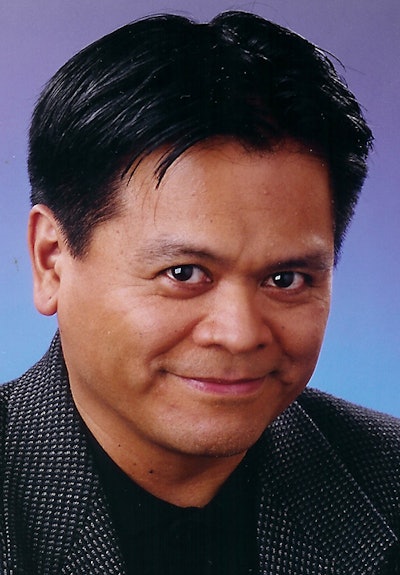With the news of pipe bombs and hot rhetoric, the trial in Boston over Harvard’s use of affirmative action has been anything but a racial hot-button for the president’s base.
Maybe they need the Cliff Notes?
So far the trial’s been a quaint little tea party. Downright civil, even though the plaintiffs, the Students for Fair Admission (SFFA) were brought together by a right-wing, anti-affirmative action advocate, Ed Blum, and are represented by lawyers, all of whom reportedly clerked for the most conservative Supreme Court Justice Clarence Thomas. Despite having been a beneficiary, Thomas doesn’t like affirmative action.
 Emil Guillermo
Emil GuillermoOn the other side, Harvard was represented by Bill Lee, an Asian American lawyer and a graduate of Harvard (Class of 1972). He knows what it’s like to be the only Asian in the room. He’s spent most of his time in the trial questioning Harvard’s Dean of Admissions, William Fitzsimmons, as Harvard defends its use of race. Fitzsimmons, who is White, is really the face of the trial, so far. He’s the son of a gas station owner from outside Boston, who also graduated from Harvard (Class of 1966).
Lots of symbolism here.
What most don’t understand is how the majority of Asian Americans — 58 percent — see affirmative action as a good thing.
And when asked if they favor or oppose affirmative action programs designed to help Blacks, women, and other minorities get better access to higher education, 66 percent of all Asian Americans are in favor.
Even the Chinese voters were 64 percent in favor.
And they are most of the plaintiffs suing Harvard over race based admissions.
So what is the Harvard case about?
It’s really the last stand of the professional anti-affirmative action/pro-colorblind crowd, who once thought they had something going with California’s Proposition 209. By referendum, affirmative action was banned and the group sought to nationalize the idea. But it’s run into some bumps along the way.
After failing in the Fisher v. Texas case, the professional anti-affirmative action fighter Blum, turned to the use of Asians as victims, formed the Students for Fair Admissions and the issue has become semi-hot again. But mostly because in the time since 209 in the 1990’s the demographics have changed so much that it’s the Whites who are more concerned about their dwindling part of the pie. The Asians in the Harvard case are the plaintiffs, but the real beneficiaries if the case to ban use of race in admissions wins, will be whites.
So far in the first weeks of the trial, it’s all about stats and numbers.
One set of facts from the first week of the trial showed how Harvard likes rural students and sent recruiting letters to National Merit Scholarship Test scorers.
For Asians to get the same letter, they had to score higher.
Discrimination?
Looks worse than it is. If someone really wanted to apply to Harvard, they still could without that recruitment letter. And remember, Harvard is looking at the whole student. Race is just one small part.
No matter what stats you want to show, the bottom line is that Harvard’s freshman class has been in recent years anywhere from 16-23 percent. In other words, Asian Americans are well represented.
But what about the chart that shows that if all the Asian Americans with high test scores and grades were admitted Harvard would be more than 40 percent Asian? But after all the different factors are applied, the Asian admits drop to 18 percent.
Intentional Discrimination? Quota?
Hard to prove. It simply shows the process of how Harvard uses race in admissions legally. And despite the winnowing of a 40 percent number, Asians are still well-represented.
It would be great to hear from the Chinese students who feel they were discriminated against.
But that’s not likely to happen.
SFFA is happy to build their case on manipulated stats and match expert witnesses. Both sides have an economist with a model of Harvard admissions to buttress their side. That’s why when the trial turns for the home stretch, the winning move may come from testimony delivered by one of the Asian American Harvard students.
The ones that got in but didn’t have the perfects scores or the highest grades. The deserving beneficiaries of the “tip.”
Sally Chen is one of them. She’s a daughter of Chinese immigrants. Her father a retired cook; her mother a home maker. A working class kid, she went to a competitive all-academic high school in San Francisco where kids with higher grades and test scores were rejected by Harvard.
Why did she get in?
“I think there are many people who could do well at Harvard, it’s such a selective process, I wouldn’t say I am necessarily unique,” Chen said.
She added, “I think there’s a factor of luck, and all the things that need to be balanced in the admissions process including geographic diversity.”
But what made her top the other candidates with better grades?
Chen was too modest, then said how her application reviewer said she showed “humility and humor” and how that benefitted her to be seen as a whole person.
Last week I asked her what she’d do if she didn’t get in.
“I would have gone to another university like UC Berkeley, where I could have been just as happy,” she told me.
Now that’s an attitude the rejected Students for Fair Admissions should have. But when Harvard said no, they found Blum, or Blum found them. Call it affirmative action ambulance chasing.
After two weeks of the trial, it’s clear we’re just at the beginning of another long process that could end up before the Supreme Court. Just don’t buy the line from Asian American groups that say this case is about your kids and future Asian American kids who could be discriminated against. That’s what Ed Blum wants you to think while he uses Asians as White proxies in his life mission to end affirmative action.
That’s why in the Harvard trial, I’m rooting for Sally Chen.
Emil Guillermo is a journalist and commentator. You can follow him on Twitter @emilamok



















